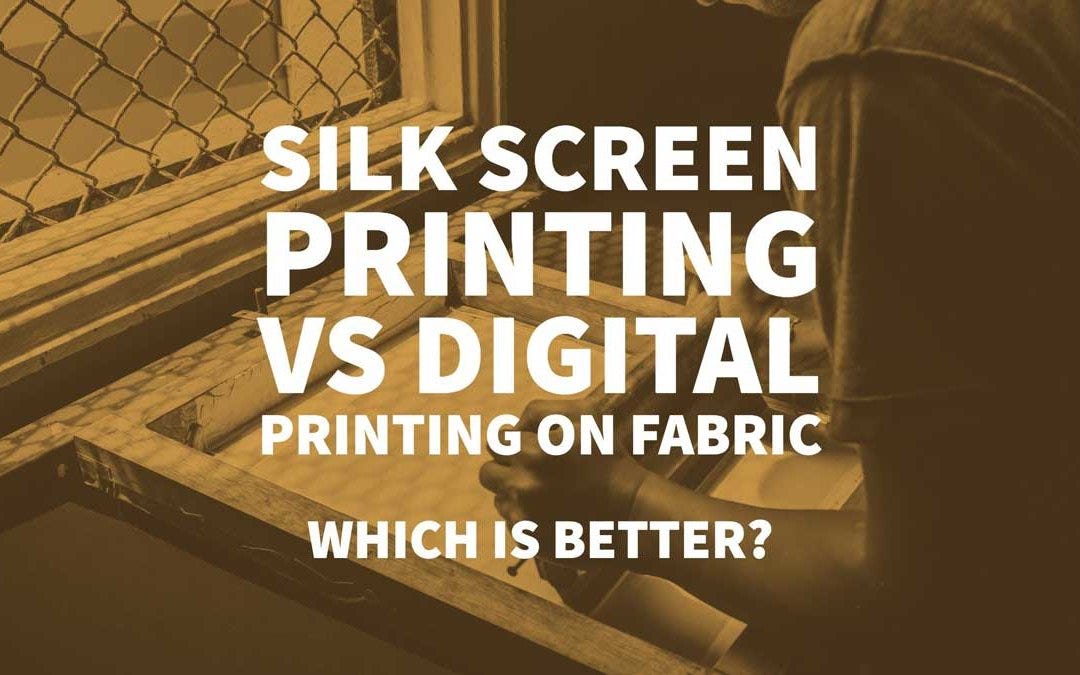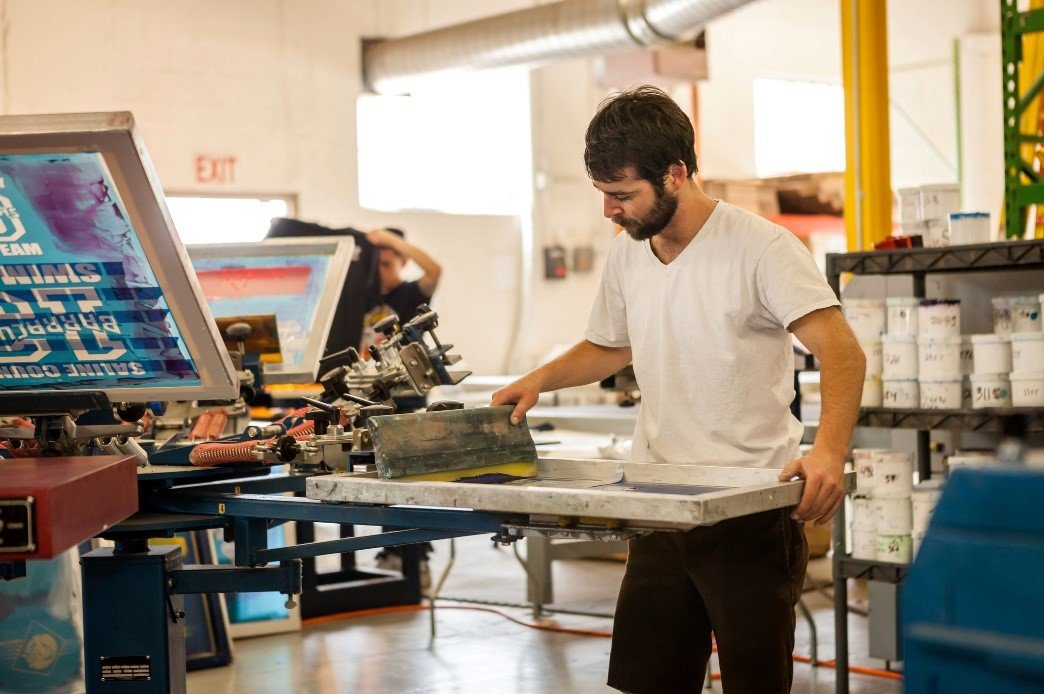The Only Guide to Tx Tees
The Only Guide to Tx Tees
Blog Article
A Biased View of Tx Tees
Table of ContentsNot known Incorrect Statements About Tx Tees 3 Simple Techniques For Tx TeesAll About Tx TeesThe Ultimate Guide To Tx TeesTx Tees Things To Know Before You BuyFascination About Tx TeesTx Tees - An Overview
That brings your total to about $1,900 prior to tax and delivery. Accumulate other prices, like the variety of utilities it takes to run the store and the price of ink and emulsion per design. screen printing shop. Take the print listed below as an example. This is a one-color image, so the expense of ink per tee shirt is roughly 20 cents.The emulsion should only be a few cents since you 'd just need to coat one display for this job. Generally, printers attempt to make up to 45% profit on a print task.

With DTF, you can publish a handful of t-shirts, or just one. Use the same calculator as the area above to calculate just how much profit you 'd use DTF transfers. Contrast the prices and revenues to whichever method talks finest to your setup and procedure. Both screen printing and DTF have their particular niches worldwide.
Tx Tees Fundamentals Explained
The very best way to understand? Ask about and see what print stores like your own are doing. embroidery shop. Attempt both out and see which you like far better
When you're picking what sort of printing method to make use of for publishing your art work layouts on your garments, it is necessary that you understand the distinctions in between these 2 strategies so you can make the most of results while lessening expenses. Display printing is the most frequently used method for publishing layouts on fabrics.
DTG printing is additionally called place or straight to garment printing because it publishes just what is required rather than making a screen as screen printers do. https://tx-tees.jimdosite.com/. Display printing works by display filler squeegee screen printing ink display mesh screen, after that moving the picture to garment making use of warm and/or stress
The DTG printer uses unique dye-sublimation inks that are used into a pre-designed photo by a digital printing system. The inks end up being component of the material, enabling dynamic shades and outstanding information. It's additionally referred to as area or straight to garment printing because it publishes just what is needed rather than making a display as display printers do.
Our Tx Tees Statements
First, it's much faster - you can print a fullcolor picture in mins, in contrast to hours for display printing. Second, there's no set up time or expenses included - you can print any type of style you like, without having to produce a screen. Third, there's no waste - since screen printers display print one style each time, they have to screen each color separately.
The paper is very expensive and can only be used as soon as. Once it's published on, it has actually to be discarded. - The initial acquisition rate is less than the in advance investment of DTG printers- You can print multi-color layouts one screen at a time rather of needing to print each shade individually like DTG printing.

Tx Tees for Beginners
However, rather than making use of screen mesh as screen printers do, dye sublimation printers make use of laser technology to transfer your photos onto garments or paper. A warm procedure transfers the color from its solid-state directly right into the gas phase which subsequently merges it onto fabric substratums when they are swiftly heated to heats under high pressure.
Sublimation printing is eco-friendly. It uses much less water than screenprinting, and because it doesn't involve using harmful solvents, it's safe for all types of apparel. The dye sublimation inks are likewise odor-free when treated, unlike display printers that utilize dangerous chemicals during the display printing procedure that leave behind an unpleasant odor.
They additionally save money on expensive tools like direct exposure systems given that color sublimation printers do not need a UV exposure system or a flash cure oven that is normally made use of in display printing (custom cap printing). What is direct to garment printing (DTG Printing)? DTG printing is a digital screenprinting process that prints straight onto look at this now textile utilizing specialized inkjet printers
The Basic Principles Of Tx Tees
DTG printing supplies lots of benefits over traditional screenprinting, consisting of the ability to publish photographic quality photos, greater shade vibrancy, and the capacity to publish styles on darker materials. DTG printers function by heating up the fabric ink up until it transforms into a gas. The gas after that permeates the textile, bonding with the fibers to create an irreversible print.

Display printers just prepare their screen then begin publishing up until they run out of product or ink.- There is a wide array of seasoned display printers around the world, which can be handy for newbies. - It's a slower procedure - screen printers frequently have to await the ink to dry before they can publish the next color- Display printers need hands-on labor, so there's a greater understanding curve and it takes longer to produce a high-quality layout- Screen printing isn't as accurate as DTG printing, so you might get some "bleeding" of colors from one part of the image onto another otherwise done appropriately.
Little Known Questions About Tx Tees.
Rather of making use of screen mesh as display printers do, color sublimation printers use laser innovation to move your images onto garments or paper. A warm procedure transfers the dye from its solid-state straight right into the gas stage which consequently merges it onto textile substrates when they are quickly warmed to high temperatures under high pressure.
Sublimation printing is eco-friendly. It utilizes much less water than screenprinting, and since it does not involve the use of damaging solvents, it's secure for all types of clothing. The color sublimation inks are additionally odor free when treated, unlike display printers that make use of hazardous chemicals during the screen printing procedure that leave an undesirable smell.
They additionally save money on costly devices like exposure systems given that color sublimation printers do not call for a UV exposure device or a flash cure oven that is generally utilized in screen printing. What is direct to garment printing (DTG Printing)? DTG printing is a digital screenprinting process that prints directly onto fabric using specialized inkjet printers.
The Only Guide to Tx Tees
DTG printing offers many advantages over standard screenprinting, including the capacity to publish photo quality images, higher shade vibrancy, and the capacity to publish designs on darker fabrics. DTG printers function by heating up the textile ink till it develops into a gas. The gas after that penetrates the material, bonding with the fibers to create a permanent print.
Report this page